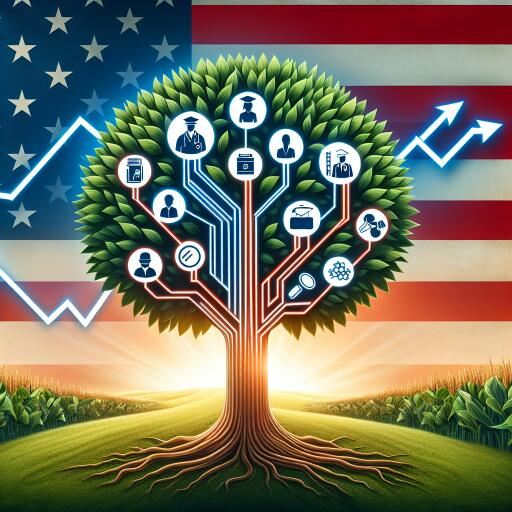U.S. hiring surges past expectations as job market still strong
In a display of enduring strength, the U.S. labor market significantly outperformed expectations in May, with substantial job additions signaling economic resilience. The Department of Labor reported an impressive increase in employment numbers, defying predictions and indicating sustained dynamism in the face of attempts to cool the economy.
The surge in job creation saw the addition of 272,000 positions in May, a notable jump from the revised figure of 165,000 in April. This robust growth far exceeded the forecasts, which had anticipated a more modest rise of 185,000 jobs. Such a vibrant hiring landscape underscores the current vitality of the U.S. economy, which remains robust amidst global uncertainties and transitional phases.
Nevertheless, this unexpected leap in job growth introduces complexities for the Federal Reserve as it deliberates on future monetary policy adjustments, particularly concerning interest rates. The current scenario might push the timeframe for potential rate reductions further out, as the hot labor market could amplify inflationary pressures, requiring a cautious approach towards implementing monetary changes.
Despite the buoyancy in job creation, the unemployment rate experienced a slight uptick, moving from 3.9% to 4.0%. However, this minor increase does not detract from the overall positive outlook, with unemployment rates still reflecting a tight labor market compared to historical standards.
Significant contributions to the employment upsurge came from diverse sectors, including health care, government, and leisure and hospitality—each continuing to show promising employment trends. Moreover, average hourly earnings witnessed a month-on-month increase of 0.4%, with the annual growth rate holding steady at 4.1%, indicative of ongoing wage pressures.
The robust job market not only benefits job seekers and workers enjoying higher wages but also supports the broader economy. High employment levels coupled with sustained wage growth contribute to consumer spending, thereby reinforcing economic expansion. As the labor market thrives, it bolsters consumer confidence and spending, essential drivers of economic growth.
As the Federal Reserve gears up for its forthcoming policy meeting, all eyes will be on how it navigates the current economic landscape. With a strong job market potentially delaying interest rate cuts, policymakers find themselves balancing between sustaining growth and managing inflation risks.
This situation serves as a reminder of the complexities involved in steering the economy through shifting dynamics, signaling a careful path forward for the Federal Reserve. For now, the robust job market offers a glimmer of resilience, showcasing the enduring strength of the U.S. economy.
